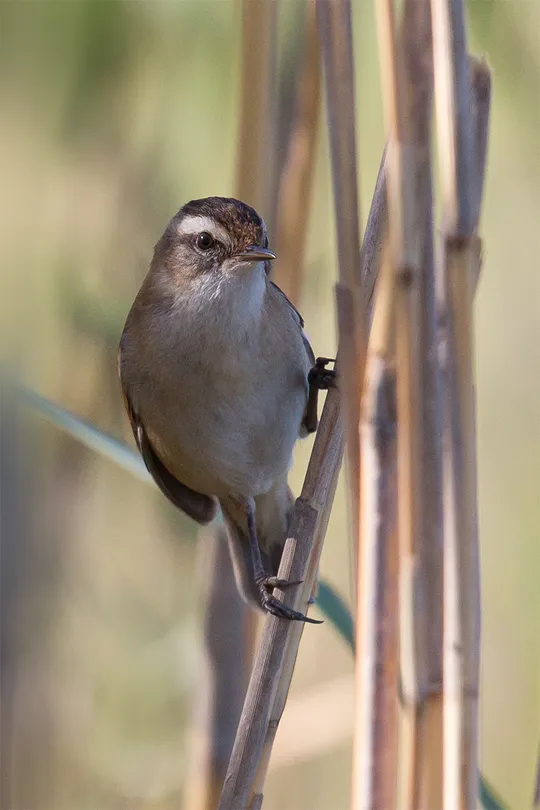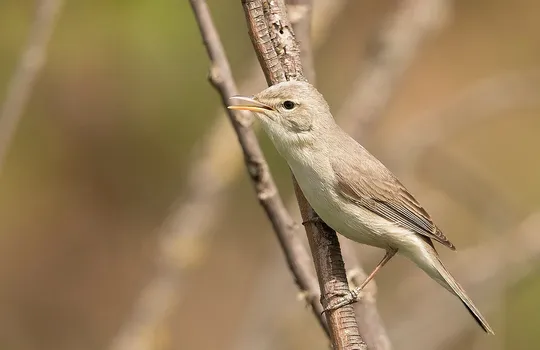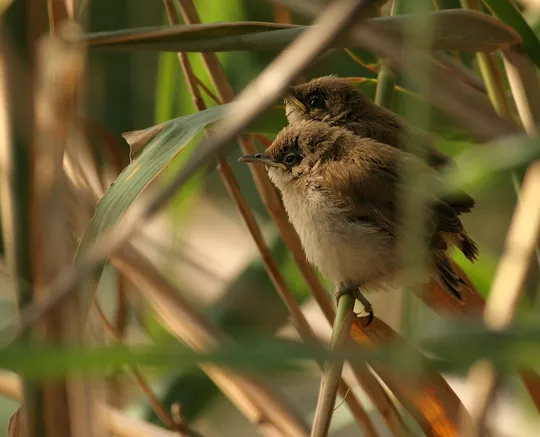Acrocephalus arundinaceus
 Critically Endangered
Critically Endangered
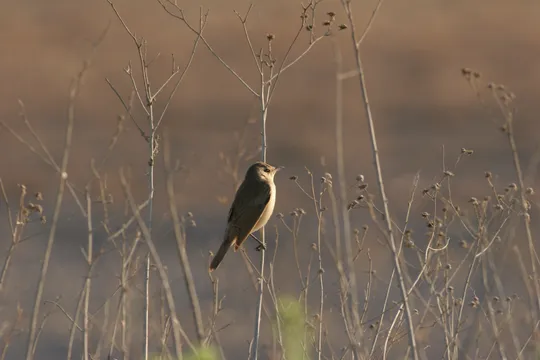
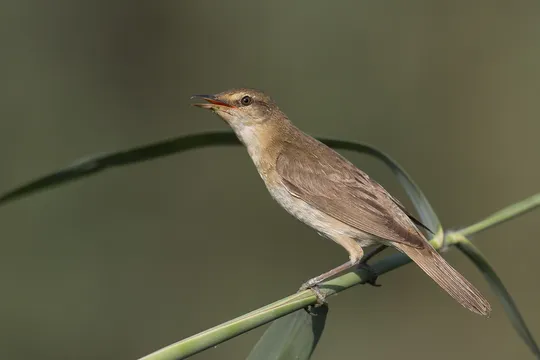
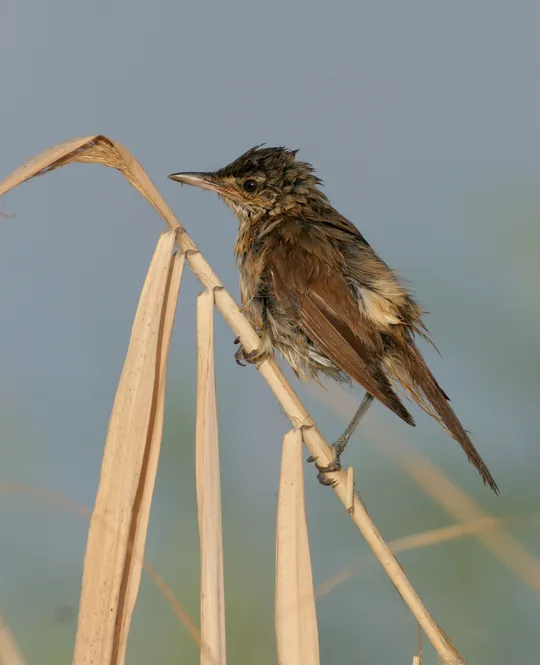
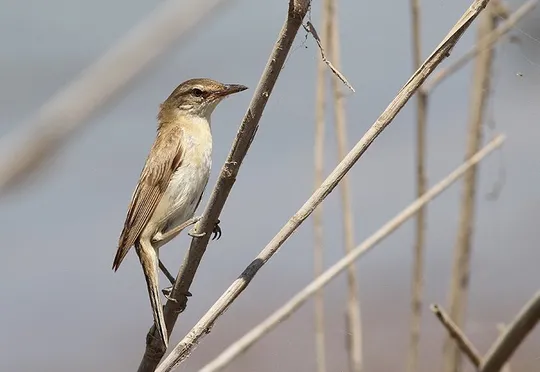
| Habitats | Wetland Thickets |
|---|---|
| Presence In Israel | Summer, Migrant |
| Breeding In Israel | Breeder |
| Migration Types | Long Range |
| Zoographical Zones | Mediterranean |
| Landscape Types | Wetlands, Marsh, Wetland Thickets |
| Vegetation Types | Marsh and Riparian |
| Vegetation Densities | High |
| Nest Locations | Wetland Thickets |
| Diet Types | Invertebrate |
| Foraging Grounds | Trees and Shrubs |
| Body Sizes | Small (up to 500g) |
| Threat Factors | Wetland Drainage & Pollution |
The Great Reed-warbler is an extremely rare breeder in the Hula Valley, a common passage migrant throughout Israel and a rare winter visitor in the Bet She’an Valley and the northern Dead Sea. Before the Hula Lake was drained, it was a common breeder there, as well as on the northern Coastal Plain and in the Bet She’an Valley. The breeding population decreased significantly after the marshes were drained and wetlands were contaminated and destroyed (during the 1950s and the 1960s). In the 1980s, a few pairs nested in the Hula Valley, northern Sea of Galilee and probably in the Bet She’an Valley (Paz 1986, Shirihai 1996). In recent years, however, there is evidence of nesting only from the Hula Valley, which is apparently sporadic and not annual.
Water bodies in Israel’s Mediterranean and steppe regions, with dense riparian vegetation and extensive reed beds. During migration, the Great Reed-warbler can also be seen in agricultural fields and vegetation thickets far from water.
Habitat modification – drainage and drying of wetlands in northern Israel, particularly the Hula Marshes, reduced the number of habitats occupied by the Great Reed-warbler, and possibly disturbed the competitive equilibrium with the more successful resident Clamorous Reed-warbler.
No specific conservation measures have been taken for this species to date.
The Great Reed-warbler once nested in marshes and thickets in the Northern Valleys. Its population declined drastically during the second half of the 20th century because of habitat destruction. The current breeding population is relictual, on the verge of extinction. The population that nested in northern Israel was the southern limit of the species range. There may be small populations still breeding in northern Jordan, Syria and Lebanon (Cramp & Simons 1992, BirdLife 2017) but no updated information is available.
Habitat rehabilitation and restoration – in order to improve the status of the Great Reed-warbler in Israel there is need for management of suitable breeding areas, such as the Hula, Bet Tsayda and Bet She’an valleys. Developing wetlands surrounded by extensive vegetation thickets could encourage re-establishment of the species in these areas.
Israel is one of the areas in the Great Reed-warbler’s range where there is an overlap with the closely related resident species Clamorous Reed-warbler. Both species apparently compete for the same resources, which may affect the survival and reproductive ability of the Great Reed-warbler.
- פז, ע. 1986. עופות. מתוך אלון, ע. (עורך), החי והצומח של ארץ ישראל. כרך 6. הוצאת משרד הביטחון, ישראל.
- Cramp, S and Simmons, R.G. 1992. The Birds of the Western Palearctic, Volume 6. Oxford University Press
- Shirihai, H., 1996. The Birds of Israel. Academic Press, London.
- Symes, A. 2013. Species generation lengths. Unpublished, BirdLife International.
- Species page at Birdlife International
Current Occupancy Map
| Data Missing | Sporadic | Limited Sites | Low Density | High Density |
|---|---|---|---|---|
| 0 | 0 | 0 | 0 | 0 |
Distribution maps
The maps presented here provide visual information on the distribution of species in Israel from the past and present, and the changes in occupancy and breeding density during the comparison period. For further reading
Relative Abundance 2010-2020
Breeding density values in the current decade as determined from experts' opinion and observations from databases.
| Data Missing | Sporadic | Limited Sites | Low Density | High Density |
|---|---|---|---|---|
| 8 | 12 | 12 | 21 | 19 |
Relative Abundance 1980-1990
Density values based primarily on the book The Birds of Israel (Shirihai 1996).
| Data Missing | Sporadic | Limited Sites | Low Density | High Density |
|---|---|---|---|---|
| 5 | 14 | 14 | 17 | 22 |
Occupancy 1990-2020
The map shows differences in the species breeding distribution between the 1980's breeding map and the current weighted breeding evaluation. Negative value - species previously bred in the grid and is not presently breeding; positive value - species has not previously bred in the grid and is currently breeding.
| Data Missing | No Change | Occupancy Increase | Occupancy Decrease |
|---|---|---|---|
| 6 | 35 | 1 | 9 |
Change in Relative Abundance 1990-2020
The map shows the changes in the relative abundance of a species in each of the distribution grids between the breeding map of the 1980s and the weighted current breeding evaluation. Negative values - decline in abundance; positive values - increase in abundance; zero - no change in abundance.
| 80 to 100 | 50 | 20 to 30 | No Change | 30- to 20- | 50- | 100- to 80- | Data Missing |
|---|---|---|---|---|---|---|---|
| 0 | 4 | 2 | 22 | 12 | 14 | 11 | 16 |
| Rarity | |
|---|---|
| Vulnerability | |
| Attractiveness | |
| Endemism | |
| Red number | |
| Peripherality | |
| IUCN category | |
| Threat Definition according to the red book |
 Contributed:
Contributed: 